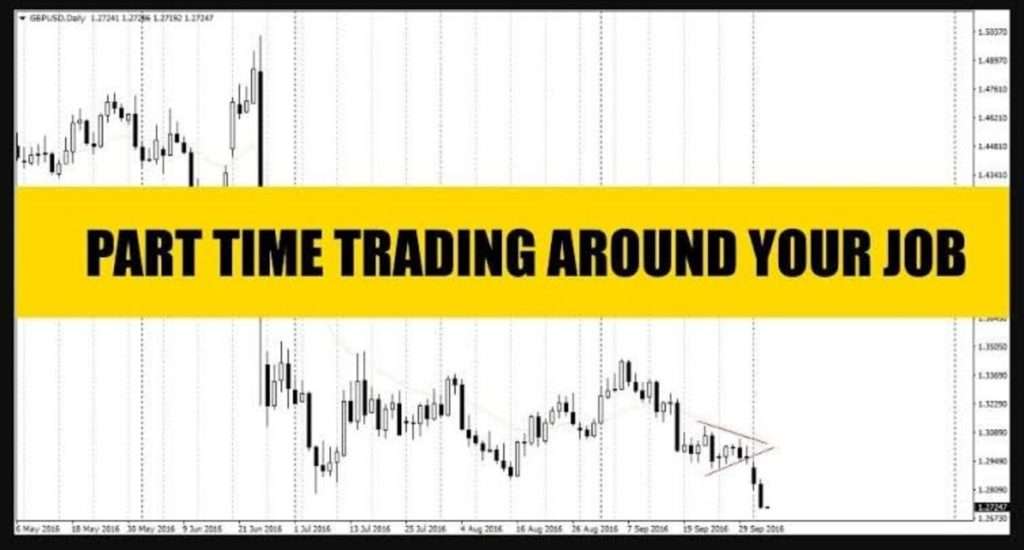Looking for a way to supplement your income? You do not have to quit your full-time job to get into trading. Here is a complete guide on how to become a successful part-time trader.
Don’t be left out, Learn how to trade forex the right way, Click here to get started
Many people want to get into forex but are not ready to quit their day job; Perhaps because of the high risk involved in forex. But part-time trading is very practical. Most professional traders do their trading for one to three hours every day.
Table of Contents
How to Become a Successful Part-time Forex Trader
Part-time Day trading tips for stocks and futures
Day traders typically trade futures and stocks for one to three hours per day. Some traders trade the whole day. However, the greatest potential lies around the official opening and close of stock trading. This is the time around 9:30 a.m and 4:00 pm respectively.
When you get into part-time stock trading, aim for the market opening, which is around 9:00 to 9:15 am. If your time trading is completely limited, aim to get into the market the first 30 minutes after the market opens. This is the most volatile part of the day. If you have one hour to trade, extend this time to 10.00 or 10:30 a.m EST. This is when the market has the most profit potential. You can trade up to 11:00 am EST but as the lunch hours approach, the market volatility drops. Around noon, the trades start taking longer to complete.
If your trading break begins later in the day, consider opening positions from around 3:30 to 4:00 pm. Normally, day traders close all positions at the close of the market which is 4:00 pm making the market highly volatile.
This strategy can be used to trade stocks as well as futures. The trading volume and action tend to occur just before and after the US stock market opens. This is especially true for stock-related futures such as the E-mini S&P 500 (ES).
Part-time Day trading tips for forex
If your daily activities limit you from trading the stock markets, the foreign exchange (forex) is a great alternative. It is open 24 hours 5 days a week.
Trading forex takes place using currency pairs, with the most common being the Euro and US dollar (EUR/USD), AUD/USD, and USD/JPY. Forex pairs are active during different times of the day.
When trading EUR/USD or GBP/USD, the most volatile time is around the US stock market opening and a few hours after, that is 8:00 am to 11:00 am EST. You can also trade around 1:00 am to 8:00 am EST when the European market is open for business. While this period is not very volatile, some trends develop around this time that have potential. This time is for people who don’t like trading around the US market opening time.
To become a successful part-time trader, you should consider these ideas;
1. Find the right pairs to trade
The ideal time for a part-time trader to trade is when there is peak volume to guarantee liquidity. Liquidity is the trader’s ability to open a position, which is easy when there is high volatility.
For traders with small accounts and beginners, it would be best to trade USD against other currencies. There is high volatility in the currency pairs names below;
- USD/EUR
- USD/JPY
- USD/GBP
- USD/CHF
- USD/CAD
- USD/AUD
For experienced part-time traders, the following currency pairs offer high liquidity:
- USD/GBP
- EUR/JPY
- EUR/CHF
However, part-time traders with limited trading time are advised to use only the USD/EUR pair. The reason behind this is they have the most trading volume and there is available information for news trading.
2. Setup an automated trading system
Due to the limited trading window, part-time traders may opt to use automated trading. Trading bots help traders to place market orders, recognize trends, and identify profitable spreads.
Trading platforms such as Deriv give the trader an option to develop their own bots with no prior programming knowledge. Learn how to build your own trading bot without programming knowledge here. A trader is first required to build their bot then deploy it. The trader feeds their trading strategies into the bot and once the set conditions are achieved, the bot automatically places a trade. The trader is also allowed to use risk management practices such as stop loss and take profit. Automated trading offers disciplined and emotionless trading and it can be ideal for beginners. Experienced traders prefer bots with programmable options.
Part-time Day Trading tips for Synthetic Indices
Trading Boom and Crash on Deriv is one of the best options for part time traders. This is because the market is open 24/7 and the spread is same 24/7. To be a successful part time trader with Boom and Crash, you have to develop a trading strategy, trading time and set a risk management strategy for all your trade. Most part time traders I come across use Buy or Sell limit with Tp and Stop loss and the return is great.
First, they will analyze the market, place buy or sell limit with Tp and Stop loss; then check back at the close of the market to see if the limit was triggered or not and decide on next step
Don’t be left out, Open a free trading account now by clicking here
Bottom line
Part-time trading is very possible. Before getting into part-time trading, develop your trading strategy. Get insights on how to come up with a trading strategy here. Proceed to define the ideal time of trading. This is important because you build experience and knowledge of the market behaviour during that time of the day. Focus on highly volatile pairs such as the EUR/USD. Another trick behind part time trading is choosing the time to trade, that is either during market opening or closing. To become a successful part-time trader you need patience, commitment and trading skills.
All the best!
Deriv offers complex derivatives, such as options and contracts for difference (“CFDs”). These products may not be suitable for all clients, and trading them puts you at risk. Please make sure that you understand the following risks before trading Deriv products: a) you may lose some or all of the money you invest in the trade, b) if your trade involves currency conversion, exchange rates will affect your profit and loss. You should never trade with borrowed money or with money that you cannot afford to lose.

